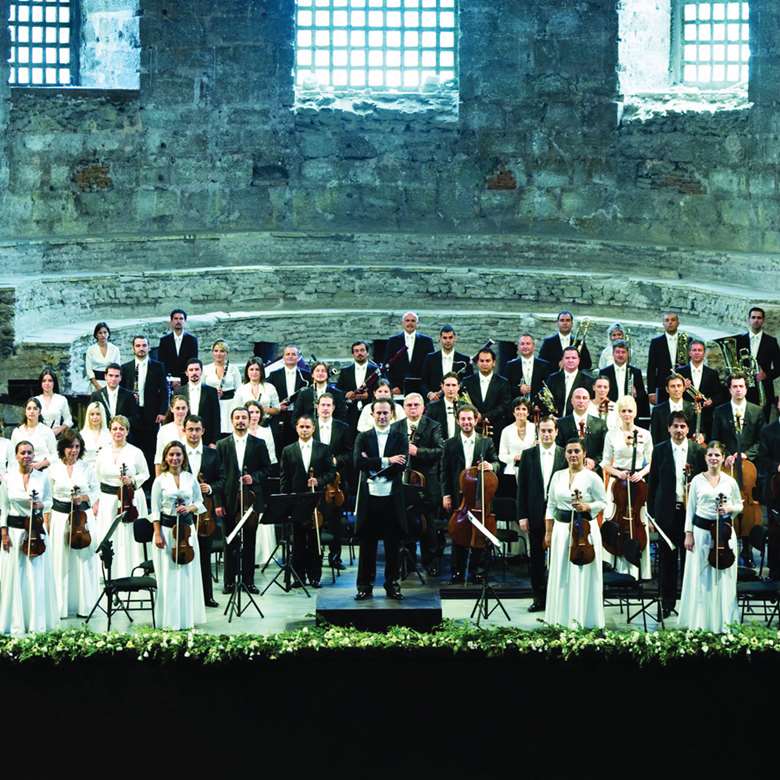The BBC Proms is a global music festival, but do all orchestras now sound the same?
Geoffrey Norris
Friday, July 18, 2014
With 10 international orchestras making their debuts at the Proms this year, Geoffrey Norris wonders what it is that gives an orchestra its national identity

Distinctive sound. How often do we see these two words applied to orchestras? Read any orchestra’s self-assessment and, likely as not, it will pride itself on the distinctiveness of its sound. Read concert or CD reviews of the great orchestras and in all probability there will be a comment about its distinctive sound. When Gramophone published its list of the top 10 international orchestras in 2008, all of them – from the Royal Concertgebouw at No 1 down to the Dresden Staatskapelle at No 10 – could be said to have a sound that is distinctive.
The appearance of no fewer than 22 foreign orchestral ensembles at the Proms this year, of which almost half are making their Proms debut, prompts a broader question: alongside any individual characteristics that an orchestra might possess, is there such a thing as a national identity to the way in which an orchestra plays? Can we recognise the Royal Concertgebouw as being quintessentially Dutch, or the Dresden Staatskapelle as German? Will the Qatar Philharmonic, with its complement of largely non-Qatari players and its South Korean conductor Han-Na Chang, strike us on September 7 as offering a typically Qatari slant on Tchaikovsky’s Fifth Symphony, Rachmaninov’s Second Piano Concerto and the Iranian composer Behzad Ranjbaran’s Seemorgh? Will the Borusan Istanbul Philharmonic Orchestra under its Austrian conductor Sascha Goetzel bring a particularly Turkish flavour to its concert on July 29? Since the programme contains the overture to Mozart’s Die Entführung aus dem Serail, that might well be the case, but in Balakirev, Holst, Handel, Respighi and Gabriel Prokofiev – who knows?
Describing orchestras according to their national provenance has often resulted in lazy cliché: discipline (German), reedy (French), quick-learning (British), sleek (American), full-bodied (Russian). Interestingly, Russia is one of the major countries that has no orchestra playing at this year’s Proms, but it is in Russia where the most striking changes have occurred in orchestral playing over the past half a century. Anybody who treasures discs by Moscow or Leningrad orchestras from the height of the Soviet era will know that one of the instantly identifiable features is the exuberance of the brass sections. Give the trumpet a solo and he (it was always a he) will be puffing out his cheeks until they are fit to burst and going full pelt with a vibrato as wide as the Russian steppe itself. Nowadays that is not the case. The practice is regarded as old-fashioned. In the Russian orchestras that have a long history, as in the ones that have sprung up in the post-Communist age, the brass sections are now, if not exactly mellow, then certainly less obtrusive in that way which foreign listeners often regarded as comical.
We tend to admire Russian orchestras – or at least the best of them – for the richness of sound that emanates from the lower strings and rises up through the general texture. But wait. Do we not also admire the way in which Vasily Petrenko has instilled a ‘Russian’ sound into the Royal Liverpool Philharmonic Orchestra for its Naxos series of Shostakovich symphonies? This is perhaps a much more intriguing development in the orchestral landscape of today than searching for national identity or contending that German orchestras have a special claim on German music, French on French, British on British, and so on. Programmes in concert halls throughout the world would look very bleak if that were so, and we know it not to be true. Yes, we can hear the Leipzig Gewandhaus Orchestra or the Royal Concertgebouw, to name only two, and we can know that they are who they are from the special attributes of the way in which they play and the particular timbre that they produce, a timbre that has in many cases been honed over considerable time and nurtured by the acoustics of the auditoria that the orchestras have as their homes. Tradition is a laudable, valued commodity, and it is a tribute to the dignity in which it is held that, for all the globalisation, swiftness of communication and ease of international travel that can mean an orchestra can choose players from more or less wherever it likes, individuality is maintained and cherished.
But, equally, the great orchestras – and even the not so great ones – have shown themselves to be malleable rather than doggedly representative of a ‘national’ style. And this surely is a positive factor. If the music being played dictates a particular interpretative stance and elicits a compelling performance, does the orchestra’s geographical origin matter?
The 10 international orchestras make their Proms debuts in Proms 2 (China Philharmonic Orchestra), 16 (Borusan Istanbul Philharmonic Orchestra), 44 (Melbourne Symphony Orchestra), 48 (Iceland Symphony Orchestra), 55 (Seoul Philharmonic Orchestra), 58 (Deutsche Oper Berlin), 61 (Singapore Symphony Orchestra) and 67 (Qatar Philharmonic Orchestra), and in Proms Saturday Matinees 1 (Armonia Atenea) and 2 (Lapland Chamber Orchestra)











